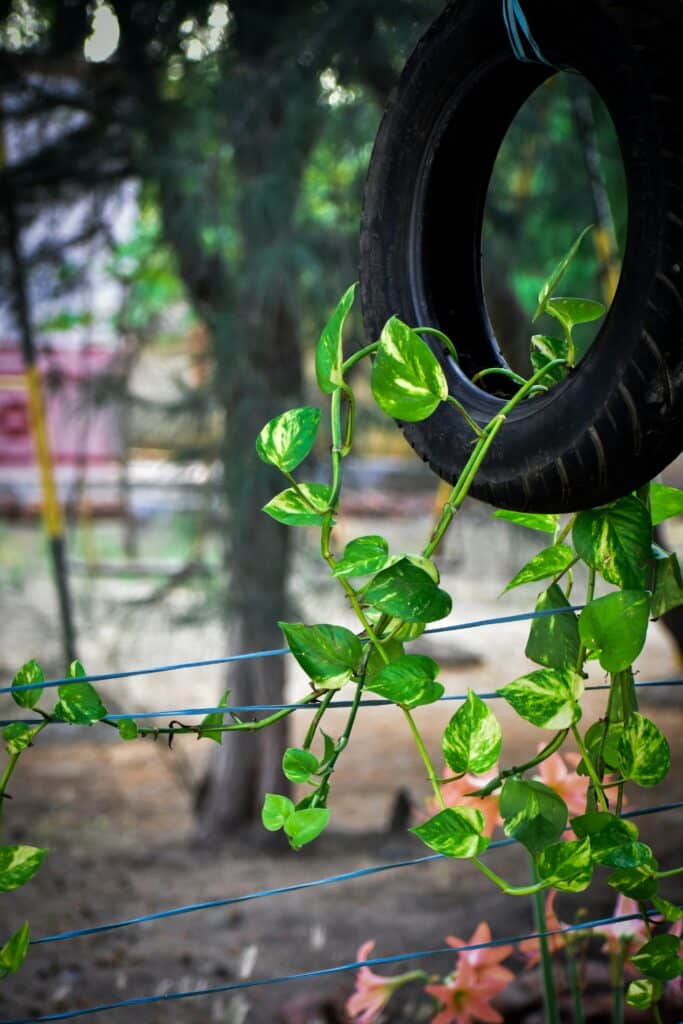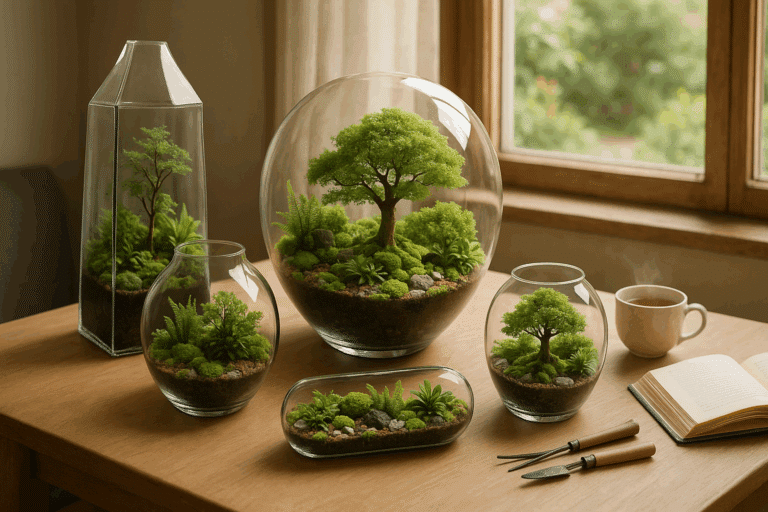This piece explores how to infuse the indoors with a bit of the outdoors by creating your own DIY air plant frame, a simple yet elegant way to incorporate greenery at home.
The trend of indoor gardening has gained considerable popularity over the years, and air plants, with their minimal care requirements and versatility, have become a favorite choice for many. From the novice gardener to the seasoned green thumb, air plant frames are an easy-to-make, attractive addition to any home decor.

In this write-up, we will walk you through a detailed, step-by-step guide to creating your own stunning DIY air plant frame. This guide will be useful to individuals who enjoy DIY projects and those who desire a touch of nature in their homes but lack ample outdoor space. The flexibility of air plant frames means they can fit into any home decor theme or personal style.
Additionally, we delve into the benefits of having indoor plants, specifically air plants, in your home. Beyond their aesthetic appeal, these plants also boost your mood, purify the air, and increase humidity levels, offering a healthier indoor environment.
So gear up, and get ready to create an indoor oasis with this DIY air plant frame project. Get set to experience a slice of the great outdoors right within the comfort of your own home. Stay tuned to learn, create, and transform your living space into a green sanctuary. 🌿🏡
Understanding the Fundamentals of Air Plant Frames
To fully appreciate the value of a DIY air plant frame, it’s crucial to comprehend the basics of what it is and how it works. An air plant frame is a vertical garden system that allows air plants, also known as Tillandsia, to grow without soil. These frames provide a unique and modern way to display plants, bringing a touch of greenery into your home.
Air plants are native to the forests, mountains, and deserts of Central and South America, the southern United States, and the West Indies. They’re named for their natural tendency to attach themselves to whatever’s available, including tree branches, rocks, and even telephone lines.
The air plant frame is designed to replicate this natural environment by providing a structure for the air plants to cling to. The beauty of an air plant frame is its simplicity and versatility. You can hang it on a wall, place it on a shelf, or even use it as a tabletop centerpiece.
Benefits of Having an Air Plant Frame at Home
There are several reasons why you might want to consider creating your own air plant frame. For starters, it’s a great way to bring the outdoors in, especially if you live in an apartment or a house with limited outdoor space. Having plants indoors has been proven to improve air quality by filtering out harmful pollutants and increasing humidity levels.
Moreover, air plants are incredibly low maintenance. They don’t require soil—so there’s no mess—and they absorb nutrients and water through their leaves. They only need indirect light and regular misting or soaking. This makes them perfect for beginners, busy professionals, or anyone looking to introduce greenery without the stress of traditional plant care.
Another advantage of air plant frames is their flexibility in design. Since these plants can be mounted onto almost any surface, you can integrate them into your décor seamlessly. Whether you prefer a rustic wooden aesthetic, a modern metallic grid, or a whimsical driftwood sculpture, an air plant frame can be tailored to match your interior style.
How to Create a DIY Air Plant Frame
Now that we understand the concept and benefits of an air plant frame, let’s delve into how to create one at home. It’s a simple project that requires minimal tools and materials, yet offers high visual impact.
Materials You’ll Need:
Decorative elements (optional: moss, stones, shells, driftwood)
A picture frame or wooden frame
Chicken wire, mesh, or string for mounting
Hot glue gun or small nails
Air plants
Instructions:
- Prepare Your Frame: Remove any glass and backing. You’re left with the outer structure. Sand and paint or stain the frame if desired.
- Create the Grid: Attach chicken wire or string across the back of the frame. This will act as your mounting surface. Use a staple gun or glue gun to secure it.
- Add Your Plants: Gently thread the base of each air plant through the grid. You can secure them with wire if necessary, but avoid damaging the plant.
- Add Decorative Touches: Fill any gaps with preserved moss, small pebbles, or bark to give your frame a more natural look. This step helps cover the mesh and gives your frame a lush appearance.
- Mount or Display: Hang your air plant frame on the wall, place it upright on a shelf, or lay it flat as a centerpiece.
Creating an air plant frame is also a great group activity—perfect for families, classrooms, or crafting with friends. You can even create themed frames for different seasons or holidays.
Caring for Your Air Plant Frame
Even though air plants are hardy, some care is still required to ensure they stay vibrant.
- Light: Place the frame where it receives bright, indirect light. Avoid direct sunlight as it can dry the plants out.
- Water: Mist your air plants 2–3 times a week or soak them in a bowl of water for 20 minutes every 7–10 days. Allow them to dry upside-down before placing them back.
- Air Circulation: Good air flow is essential. Avoid placing your frame in enclosed or overly humid areas.
- Fertilizer: Use a bromeliad or air plant-specific fertilizer once a month, diluted in water, during misting.
Materials Needed
- A frame (you can use an old photo frame, a wooden frame, or even a metal grid)
- Wire or fishing line
- Wire cutters
- A selection of air plants
An air plant frame is more than just a décor element; it’s a living artwork that connects you to nature. It brings life and texture to your space and invites creativity at every step—from building to arranging and caring. Whether you’re an experienced gardener or someone with a self-proclaimed black thumb, this project can be your gateway to a more vibrant and green lifestyle.
So gather your materials, set aside an afternoon, and craft a unique air plant display that reflects your personality and style. With minimal effort and maximum charm, your new air plant frame will quickly become one of your favorite pieces of home decor. 🌿
Procedure
Start by preparing your frame. If you’re using an old photo frame, remove the glass and backing. Then, secure your wire or fishing line across the frame to create a grid. This grid will act as a support structure for your air plants, allowing them to sit securely while being displayed at various angles.
You can use galvanized wire, copper wire, or even jute twine for a rustic look. The spacing between the lines depends on the size of your plants—closer together for smaller air plants, and wider for larger ones. Secure the lines tightly to ensure they won’t sag under the weight of the plants.
Once your frame is ready, it’s time to attach your air plants. You can do this by gently threading the plants through the grid or by tucking their base or leaves around the wire. Be cautious not to bend or squeeze them too tightly. Some people prefer to use small bits of floral wire to help hold the plants in place more securely—just be sure it’s not cutting into the foliage.
Caring for Your Air Plant Frame
Once you’ve created your air plant frame, it’s crucial to know how to care for it properly. Even though air plants are low maintenance, they still need some attention to thrive.
Caring for Your Air Plant Frame
Once you’ve created your air plant frame, it’s crucial to know how to care for it properly. Even though air plants are low maintenance, they still need some attention to thrive.
Watering
Air plants should be misted with water once a week, thoroughly soaking their leaves. Alternatively, you can remove them from the frame and submerge them in water for 20–30 minutes every 1–2 weeks, then allow them to dry completely before placing them back. Proper air circulation afterward is essential to avoid rot.
Lighting
Air plants prefer bright, indirect light. Place your frame near a window with filtered sunlight or use grow lights if natural light is limited.
Feeding
Air plants get their nutrients from the air, hence their name. However, you can give them a boost by misting them with a diluted liquid fertilizer once a month.
Experimenting with Different Styles and Designs
One of the most enjoyable aspects of creating a DIY air plant frame is the opportunity to experiment with different styles and designs. You can play around with different frame materials, plant arrangements, and even incorporate other elements like moss or decorative stones. The beauty of air plants, or Tillandsias, lies in their versatility—they don’t require soil, which means they can be mounted almost anywhere and in nearly any position, offering endless creative freedom.
Thematic Frames
Consider creating a thematic frame. For example, you could use a nautical theme by incorporating shells, driftwood, and starfish, capturing the tranquil essence of the sea. This theme pairs beautifully with light-colored frames or those made of weathered wood. Alternatively, for a boho-inspired frame, you can incorporate feathers, beads, or macramé hangings to give your space an earthy and relaxed vibe.
Minimalist and Modern Approaches
For those who prefer clean lines and simplicity, a minimalist Scandinavian style frame might be ideal. Think sleek metal frames, neutral tones, and symmetrical arrangements. In this approach, less is more—choose just a few striking air plants and let their natural form take center stage. For a modern industrial look, black steel frames combined with geometric arrangements of Tillandsias can make a bold statement while still maintaining a low-maintenance design.
Seasonal Frames
Another idea is to create seasonal frames. You could change the arrangement of your plants or add seasonal decorations to reflect the current time of year.

In conclusion, a DIY air plant frame is a versatile and low-maintenance way to bring a touch of greenery into your home. With a little creativity and care, you can create a stunning display that not only improves your home’s aesthetics but also contributes to a healthier and more relaxing living environment.
Customization and Personal Touches
Personalization is what truly makes your air plant frame unique. Incorporate elements that reflect your interests or style. This could include vintage trinkets, travel souvenirs, or even family photos nestled between the plants. The frame becomes not just a plant holder, but a personal art piece.
In conclusion, a DIY air plant frame is a versatile and low-maintenance way to bring a touch of greenery into your home. With a little creativity and care, you can create a stunning display that not only improves your home’s aesthetics but also contributes to a healthier and more relaxing living environment. Whether you opt for seasonal variety, thematic expression, or minimalist elegance, the possibilities are as endless as your imagination.
Conclusion
In conclusion, creating your own DIY Air Plant Frame not only gives you the opportunity to bring a breath of fresh air and a touch of greenery into your home but also offers you the chance to engage in a therapeutic and fun DIY project. The process is simple and budget-friendly, making it an ideal activity for families, couples, or even individuals seeking a creative outlet. The final product – a stunning air plant frame – acts as a unique, aesthetic addition to your home decor and contributes to a healthier and more invigorating indoor environment.
Furthermore, the versatility of air plants in terms of their maintenance and adaptability to different environments makes them the perfect choice for this project. From adding a soothing ambiance to purifying the air, the benefits are multifold. As a bonus, these DIY frames make excellent gifts that are both personal and meaningful. So, why wait? Get started on your DIY Air Plant Frame project today, and immerse yourself in a rewarding experience of connecting with nature, right within the comfort of your home.
This project epitomizes the saying ‘The best way to find yourself is to lose yourself in the service of others’ – in this case, the ‘others’ being these humble air plants. Happy planting!



